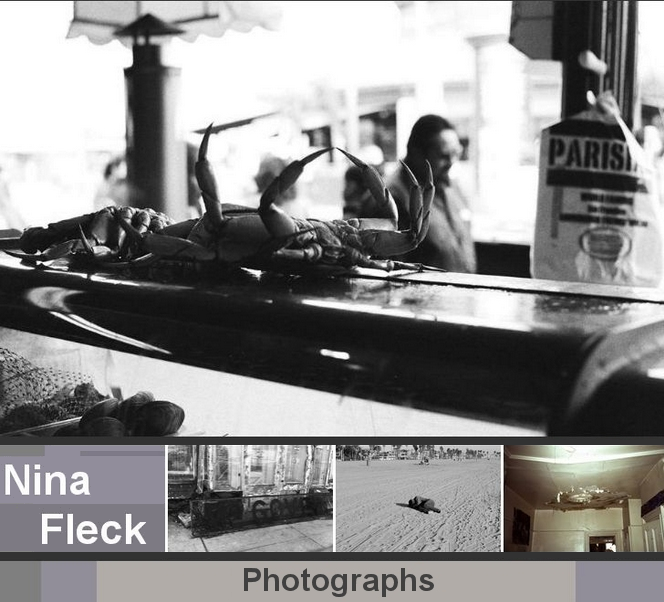 |
| While looking at Nina Fleck's photographs one is struck by the compassionate eye - the line and design of the photo never overcomes the compassion we sense in the photographer for the remnants of what remains. Buildings decay, a bird is abandoned, a homeless man sleeps on a beach. Abstract elements show us the artist is aware of modern design principles, but they are the expression of a soulful participant, one who feels a kinship of experience with the subject. ‘Forgotten’ shows a bird, neglected and caged. Four rings rise in the picture and the ovals clash with the linearity of the bars, but their presence is ominous - suggesting shackles and prisons, profound isolation. And an endless loop of regret. The photographer also captures a strong sense of the presence of people who aren’t in the photo. Where are the people who abandoned the Weir, neglected the caged bird? Or even played on the playground duck? Isolation permeates many of the photos, but the elements of design, the clarity of the photographs, the aesthetic value they contain are a way in. These people were there, they crossed the yellow painted bars on the sidewalk, they used the weather worn furniture, the basket. Detritus is the mark of the abandoned but also configures enduring notations of a presence. Human activity, building and decay – loss. But the last photograph, a nesting mourning dove peeping through the slats of a flower basket – with curiosity, trepidation, excitement – this to some degree mimics the eye of the photographer as she relays her experiences through her photographic lens. __________________ Elsewhere in this issue we have a small feature on the Vorticist artist Jessica Dismorr. While researching Dismorr I appreciated an essay on 'Modern Women: modern spaces' by Jane Beckett and Deborah Cherry relating Dismorr's way of responding experientally to the modern city around her. Named 'Street Haunting' by Virginia Woolf, the term suggests a kinship with Nina Fleck's own artistic explorations: Street Haunting In an essay written in 1930 Virginia Woolf coined the phrase 'street haunting'. Complexly resonant, street haunting conjures both haunts as often-frequented places, the spaces visited and enjoyed by women, which, for Woolf, include shops (the piece takes as its ostensible purpose the purchase of a pencil, necessary for the writer's craft), and haunting as an elliptical form of presence on the streets which includes a metamorphosis of the self along with the pleasures of walking and watching. Leaving behind, temporarily, 'the straight lines of personality' and slipping out of the familiar self left at home, the solitary rambler observes the city, spinning stories about its inhabitants. Along the way flickering glimpses of hidden lives come into view. The evening light fragments the city's surfaces into "islands of light' and 'long groves of darkness'. An essay on urban il/legibility and the feminine reader and traverser of urban space, 'Street Haunting' provides a metaphor for, a way of thinking through, Vorticist women's representations of the body in the city. 'June Night', Jessica Dismorr's prose piece in Blast 2 of 1915, may be read as a 'street haunting'. The narrator is portrayed as a hybrid, 'a strayed bohemian, a villa resident, a native of conditions, half-sordid, half-fantastic'. This changefulness is linked to movement; feminine sexuality in the city is in flux, unfixed, provisional, liminal. Like Woolf's stroller, this figure escapes her everyday self to be remade on and by the street. from Chapter 2: Modern women, modern spaces: women, metropolitan culture and Vorticism p 44, Jane Beckett and Deborah Cherry in Women Artists and Modernism, edited by Katy Deepwell _______________________________________
Click here for the Slide Show. Click here for more on Nina Fleck.
FlashPøint Magazine: a Journal of the Arts & Politics - Issue #17 / www.flashpointmag.com |